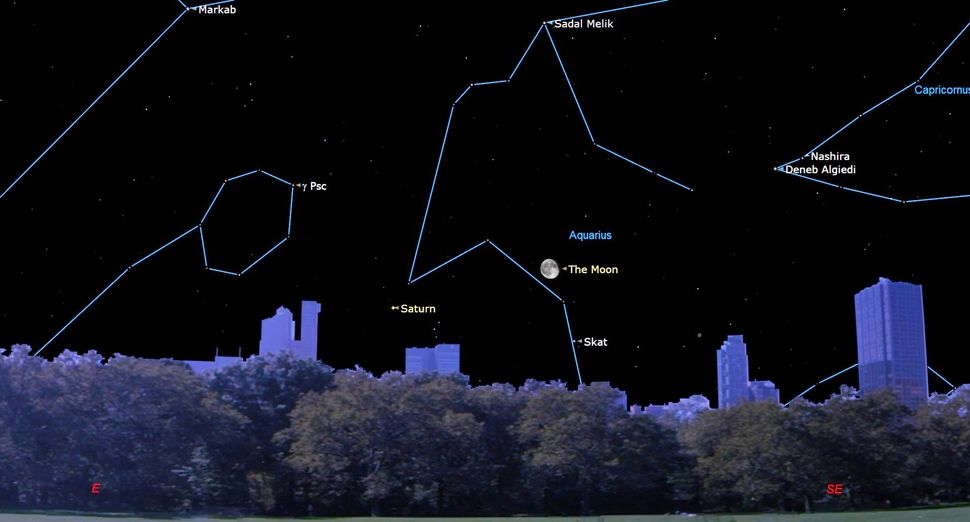
See the moon and Saturn meet up in the night sky tonight (Image Credit: Space.com)
Saturn is back. The sixth planet from the sun and the second largest in the solar system is at the top of most amateur astronomers’ wish list. In July, it rises just before midnight and is high in the south before sunrise, but there are two nights this month when the famously “ringed planet” is visited by a waning gibbous moon.
Find yourself a place with a good view low to the eastern horizon and be there around 11:00 EDT on Tuesday, July 23. You’ll see a 90% illuminated moon slightly higher in the sky and to the right of Saturn. If you want to see the moonrise, get there about 30 minutes beforehand.
The following evening, on Wednesday, July 24, the two worlds will again appear close to each other. This time, an 81% illuminated moon will be lower in the sky, and to the left, of Saturn. The moon will rise about 11:00 p.m. EDT (though do check the exact time moonrise where you are).
On both occasions, Saturn and the moon will be visible against the background stars of the Aquarius constellation. From North America, the two will appear about 10 degrees from each other.
However, those in parts of Asia and Africa will see the moon move across Saturn to occult it for a few hours, according to In The Sky. Those in eastern Africa and Madagascar, southern and eastern India, northwest Indonesia, and most of southeast Asia, China and Mongolia will see Saturn disappear behind the moon for a few hours.
That occultation and the conjunction are, of course, line-of-sight illusions. The moon is, on average, about 238,855 miles (384,400 km), from Earth, according to NASA. Saturn is, on these specific days, around 832 million miles (1,340 million km) distant. These celestial events are only happening from Earth’s point of view.
Related: Night sky, July 2024: What you can see tonight [maps]

Another consequence of our changing point of view in the solar system is how much of Saturn we can currently see. Saturn is now almost fully illuminated because it’s waxing towards its annual opposition on September 8, when Earth will be precisely between the sun and Saturn. That’s when Saturn will look its biggest, brightest and best, though anytime this summer is perfect for observing it.
However, unaided eyes nor a pair of binoculars won’t be enough to resolve Saturn’s rings. To see them you’ll need a telescope, with even a small 2-inch/50mm refractor enough to glimpse its ring pattern.
If you want to get a closer look at the planets of the night sky take a look at our guides to the best telescopes and best binoculars.
And if you want to photograph the close approach of the moon and Saturn, we have tips for how to photograph the planets, as well as guides to the best cameras for astrophotography and best lenses for astrophotography.
Editor’s Note: If you snap an image of the close approach between the moon and Saturn and would like to share it with Space.com’s readers, send your photo(s), comments and your name and location to spacephotos@space.com.





